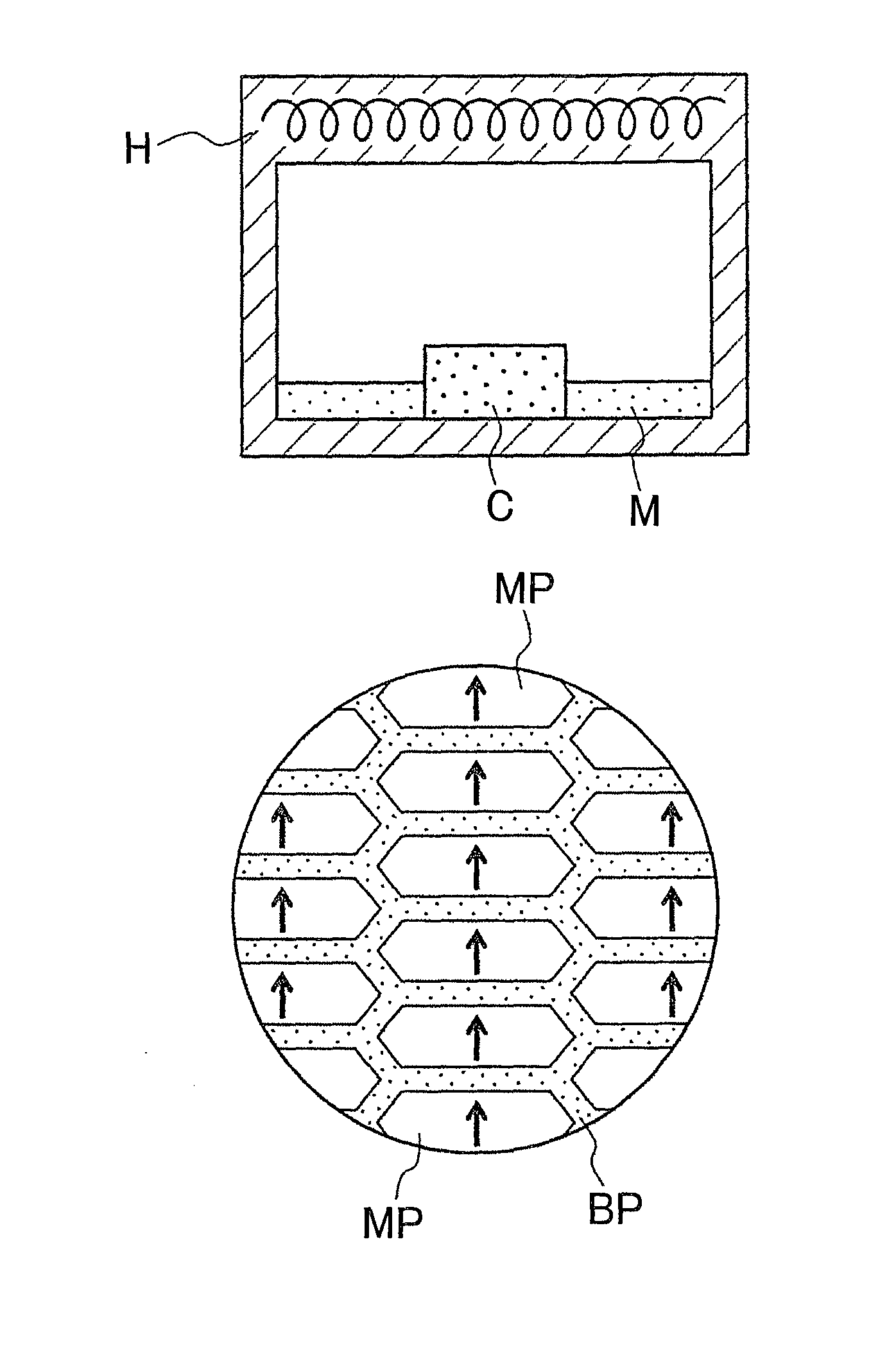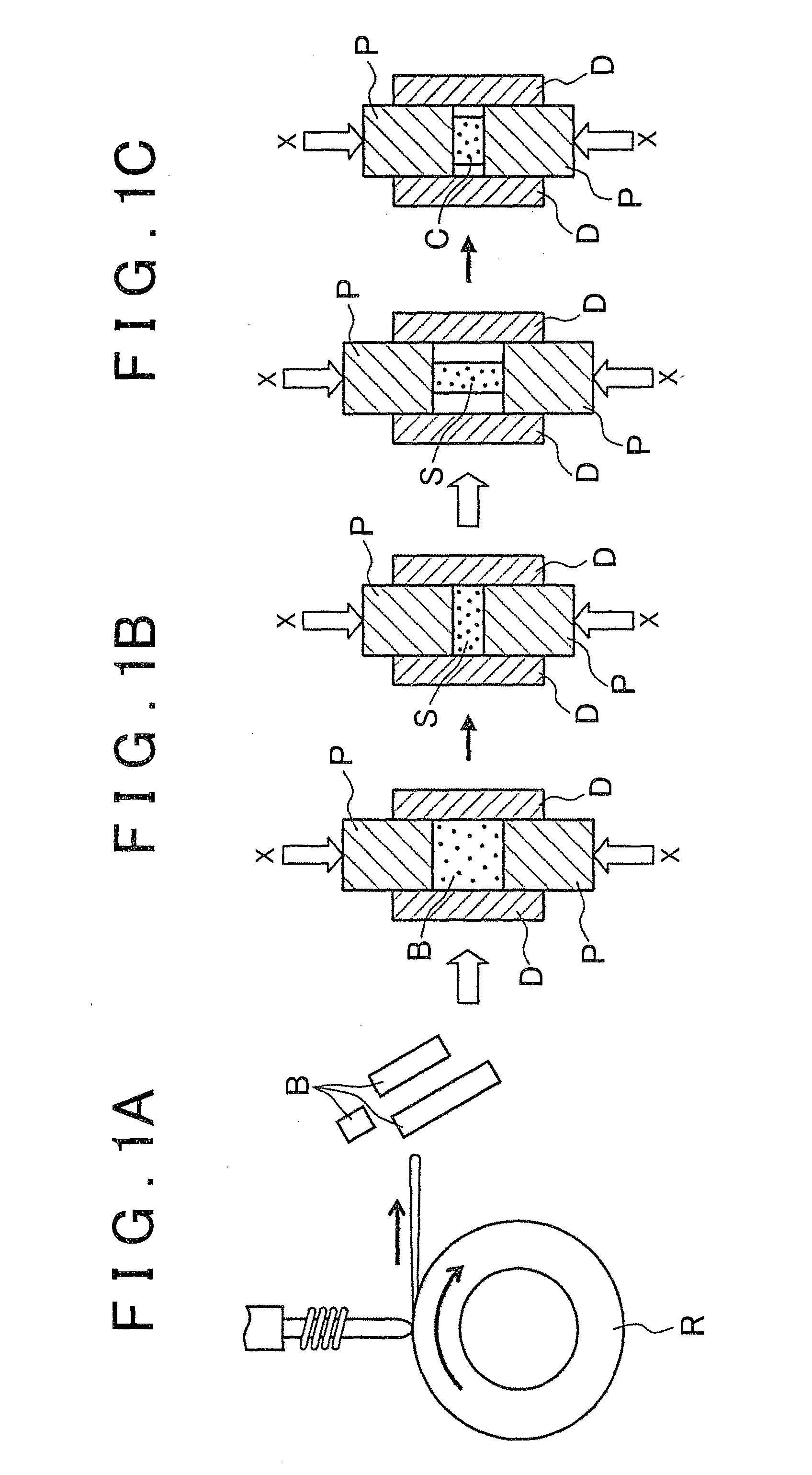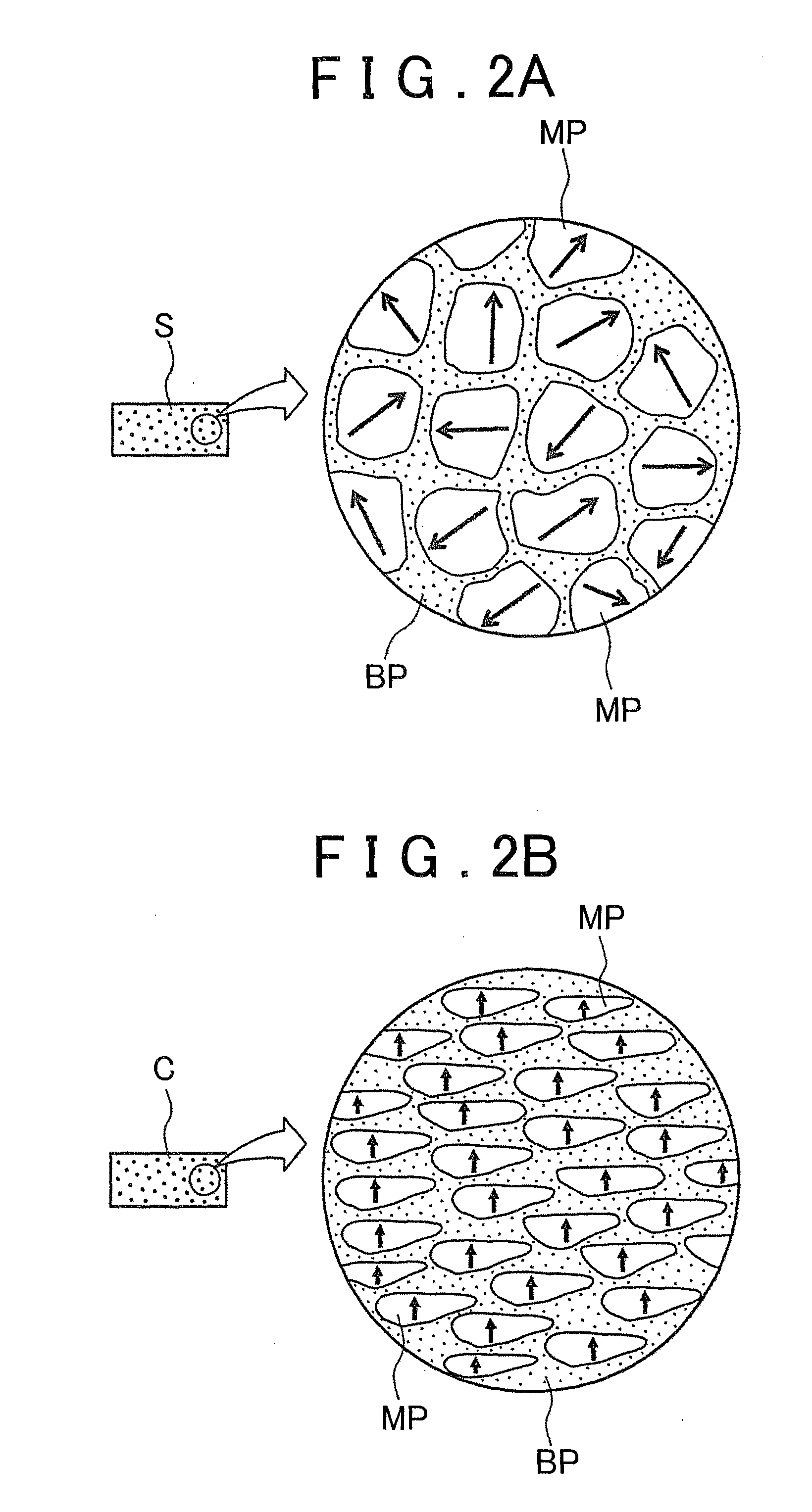Method of manufacturing rare-earth magnets
a rare earth magnet and manufacturing method technology, applied in the field of rare earth magnet manufacturing, can solve the problems of insufficient increase of coercive force and inability to suppress the coarsening of crystal grains, and achieve the effects of high coercive force, high magnetization, and increased coercive for
- Summary
- Abstract
- Description
- Claims
- Application Information
AI Technical Summary
Benefits of technology
Problems solved by technology
Method used
Image
Examples
Embodiment Construction
[0038]Embodiments of the inventive method of manufacturing rare-earth magnets are described below in conjunction with the attached diagrams.
[0039]FIGS. 1A, 1B and 1C are schematic diagrams illustrating the first step in an embodiment of the inventive method of manufacturing a rare-earth magnet, and FIG. 3A is a diagram illustrating the second step in the inventive method of manufacturing rare-earth magnets. Also, FIG. 2A is a diagram depicting the microstructure of the sintered body shown in FIG. 1B, and FIG. 2B is a diagram depicting the microstructure of the compact in FIG. 1C. In addition, FIG. 3B is a diagram depicting the microstructure of a rare-earth magnet during modification of the structure with a modified alloy, and FIG. 3C is a diagram depicting the microstructure of a rare-earth magnet in which modification of the structure with a modified alloy is complete.
[0040]As shown in FIG. 1A, an alloy ingot is high-frequency induction melted by a single-roll melt spinning proces...
PUM
| Property | Measurement | Unit |
|---|---|---|
| grain sizes | aaaaa | aaaaa |
| temperature | aaaaa | aaaaa |
| temperature | aaaaa | aaaaa |
Abstract
Description
Claims
Application Information
 Login to View More
Login to View More - R&D
- Intellectual Property
- Life Sciences
- Materials
- Tech Scout
- Unparalleled Data Quality
- Higher Quality Content
- 60% Fewer Hallucinations
Browse by: Latest US Patents, China's latest patents, Technical Efficacy Thesaurus, Application Domain, Technology Topic, Popular Technical Reports.
© 2025 PatSnap. All rights reserved.Legal|Privacy policy|Modern Slavery Act Transparency Statement|Sitemap|About US| Contact US: help@patsnap.com



